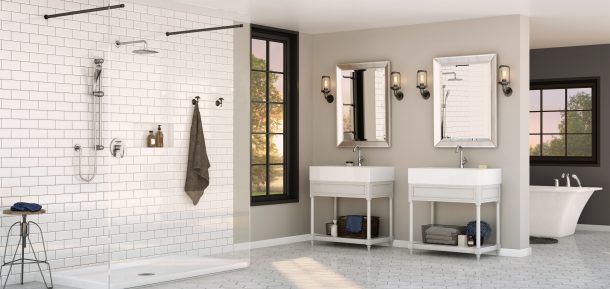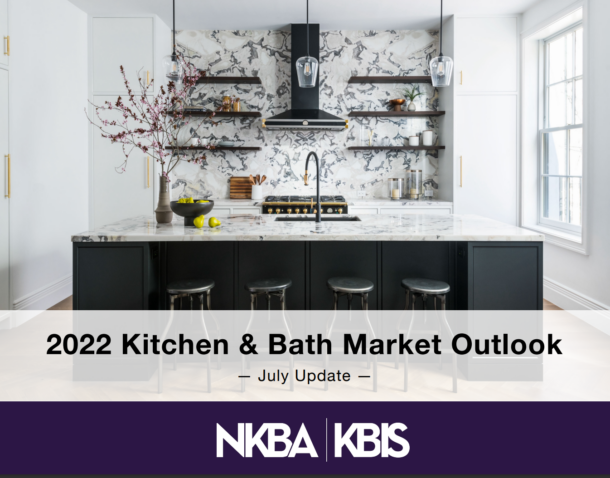Report finds resilient businesses are adopting technology, outsourcing, and focusing on customer relationships 29% of contractors plan to invest in technology this year to increase revenue, customer retention, and customer acquisition. 27% of contractors have outsourced services as a solution to streamline their processes, scale, and grow revenue Repeat customers accounted for 39% of revenue Read more
market outlook

Report finds resilient businesses are adopting technology, outsourcing, and focusing on customer relationships
- 29% of contractors plan to invest in technology this year to increase revenue, customer retention, and customer acquisition.
- 27% of contractors have outsourced services as a solution to streamline their processes, scale, and grow revenue
- Repeat customers accounted for 39% of revenue and 71% of business volume for contractors this year
ServiceTitan, a software platform built to power the trades, has released its first Residential Services Report, providing insight into the challenges and opportunities facing the industry, market outlook, business strategies, and emerging trends. These results highlight survey responses from more than 1,000 residential service contractors around the U.S.
“Residential contractors provide essential services that keep our world running, and that’s not going to change anytime soon”, said Vahe Kuzoyan, president and co-founder at ServiceTitan. “These contractors remain resilient and innovative amidst a year of diverse outcomes, using new strategies and purpose-built technology to allow them to focus on operational excellence and building lasting relationships with customers.”

Tempered sentiments reflect market uncertainty
Economic uncertainty, labor shortages, and reduced access to working capital have created a strain on businesses across the US, and in response, residential contractors have a mixed outlook for the current year. According to the survey, over half (67%) of contractors have neutral expectations for the future, 18% are optimistic, and 14% feel pessimistic.
Strategies to combat supply chain disruption
The tailwind effects of COVID-19, increased natural disasters across the nation, and global warehouse capacity issues are resulting in extended supply chain disruption. Contractors reported difficulty obtaining supplier parts (64%), raw materials (47%), specialty materials (44%), equipment (23%), vehicles (17%), and sustainable “green” materials (14%). Supplier diversification can increase supply chain resilience. 60% of contractors purchase directly from a supply house, 23% directly from the manufacturer, and 17% directly from the vendor.
Outsourcing is one effective strategy for contractors looking to increase stability and growth. Approximately one-third of businesses (27%) have leveraged outsourcing as a solution to streamline their processes. The three most common areas for outsourcing included call centers (76%), customer service (49%), and digital advertising/SEO (32%). Outsourcing allows businesses to centralize their operations and create a more consistent, reliable customer experience while scaling.
Developing trusted, deep customer relationships
Customer relationships, both existing and new, play a major role in business success. Repeat customers accounted for 39% of contractors’ annual revenue, and satisfied customers are also more likely to offer referrals or recommendations, which can help generate new leads. Respondents reported 71% of business volume in the last year came from word-of-mouth referrals. Growing revenue (56%) as well as customer retention (50%) and customer acquisition (46%) were all top priorities for residential contractors in 2023.
Attracting and retaining high-performing technicians and employees is also top-of-mind, as competition for talent remains fierce amidst a skilled labor shortage. In response, businesses are being very intentional with recruitment and retention practices. Over one-third of contractors surveyed (38%) will increase technician salaries between 4% or more as a strategy to attract and keep top talent, while 39% of respondents stated that they plan to increase technician pay by 1-3%.
Continued investment in technology presents new benefits across the business
Through emerging technologies like automation and AI, contractors can offload much of their administrative work and focus their time on boosting productivity, optimizing resources, and doing what they do best: serving customers and building lasting relationships in their communities. Survey results indicate that contractors are leveraging technology primarily for business management (63%), field service management (48%), accounting (42%), enterprise resource planning (38%), payroll (33%), and human resources (33%).
“AI is changing the way we work in the trades,” said Jason Brady, Owner and CEO at Above & Beyond Heating & Cooling. “We’re going to be able to stop focusing on the insignificant things, and really focus on the things that matter to the business. New technology isn’t always perfect, but it’s helping contractors tackle some of the menial tasks of the job so they can focus more on servicing customers.”
Technology is not only freeing up resources, but also improving worker satisfaction, enhancing safety, and creating more attractive career paths and opportunities for professional development. With technology as a key tool to achieve business goals, 29% of residential contracting businesses plan to invest in technology this year to increase revenue (56%), customer retention (50%), and new customer acquisition (46%).
To view the full findings and key takeaways, download ServiceTitan’s Residential Service Report here.
About the research
The survey was conducted on behalf of ServiceTitan by Thrive Analytics, an independent third-party research provider and a leading digital marketing research firm, polling more than 1,000 residential service contractors representing a variety of geographical regions, business growth stages, and revenue levels. For the purposes of this survey, a “residential service contractor” is defined as any business generating 60% or more of their revenue from residential services. This research is for informational purposes only and ServiceTitan provides no assurances (express or implied) with respect to the accuracy of the survey data.

Kitchen and Bath business projected to contract but still projected to be 16 percent higher than 2021 The National Kitchen & Bath Association (NKBA)– the world’s leading association for the kitchen and bath industry has released its midyear 2022 Kitchen & Bath Market Outlook. While both inflation and mortgage rate increases have impacted the segment, the overall Read more
Kitchen and Bath business projected to contract but still projected to be 16 percent higher than 2021
The National Kitchen & Bath Association (NKBA)– the world’s leading association for the kitchen and bath industry has released its midyear 2022 Kitchen & Bath Market Outlook. While both inflation and mortgage rate increases have impacted the segment, the overall annual forecast still represents a double-digit increase over 2021.
“This new Market Outlook report provides revised market size estimates and 2022 forecasts in the Kitchen and Bath Industry, as well as gauges the economic and housing market shifts that continue to impact our market,” said Bill Darcy, CEO of the National Kitchen & Bath Association (NKBA). “Despite some economic headwinds, kitchen and bath remodeling demand remains strong. Residential kitchen and bath spending is anticipated to grow by 16% to $189 billion in 2022.”

NKBA’s 2022 Kitchen and Bath Market Outlook Midyear Report Top Takeaway
- Resilient Revenues. Full-year kitchen and bath spending is expected to reach $189 billion, 16 percent higher than 2021, yet $10 billion lower than the initial 2022 forecast.
- New Construction Strength. New construction is projected to represent over 60 percent of industry revenues, driven by a record number of new home builds. The report forecasts 21 percent YOY new construction growth, unchanged from the initial report in January.
- Larger Projects Gaining Momentum. Higher-end activity has been revised upward due to rapid home appreciation and client movement on deferred projects. With upwards of 20 percent gains, mid-range projects are expected to register the biggest YOY increases based on growth in new construction. Lower-end work projection has been sharply scaled back due to higher inflation causing many to put their projects on hold.
- Numerous Remodel Drivers. Nearly three in four homeowners are locked into mortgage rates below 4 percent, making it more cost-effective to remodel than to move. This, along with record-high homeowner equity per household and a high number of homes in prime remodeling years, bodes well for the second half of 2022.
- Normalization of Housing Starts/Completions. While builders are working through the substantial backlog of homes in various stages of completion, the number of new housing starts are falling due to high mortgage rates and home prices. This combination has led to a shrinking gap between home starts and completions.
- Recession Concerns. The Fed has tried to control inflation with three interest rate hikes this year, the latest in June. Of note: The last three times the Fed initiated a cycle of rate hikes, a recession ensued within a year.

“We anticipate moderate declines in kitchen and bath spending in the event of a recession next year,” said Darcy. “Our view is informed by improved housing and consumer fundamentals and a likely less severe recession, relative to recent history if one were to occur.”
To learn more about the key findings and to access the full 2022 Kitchen & Bath Market Outlook: July Update, contact Brittany Loeffler at bloeffler@whitegood.com.
